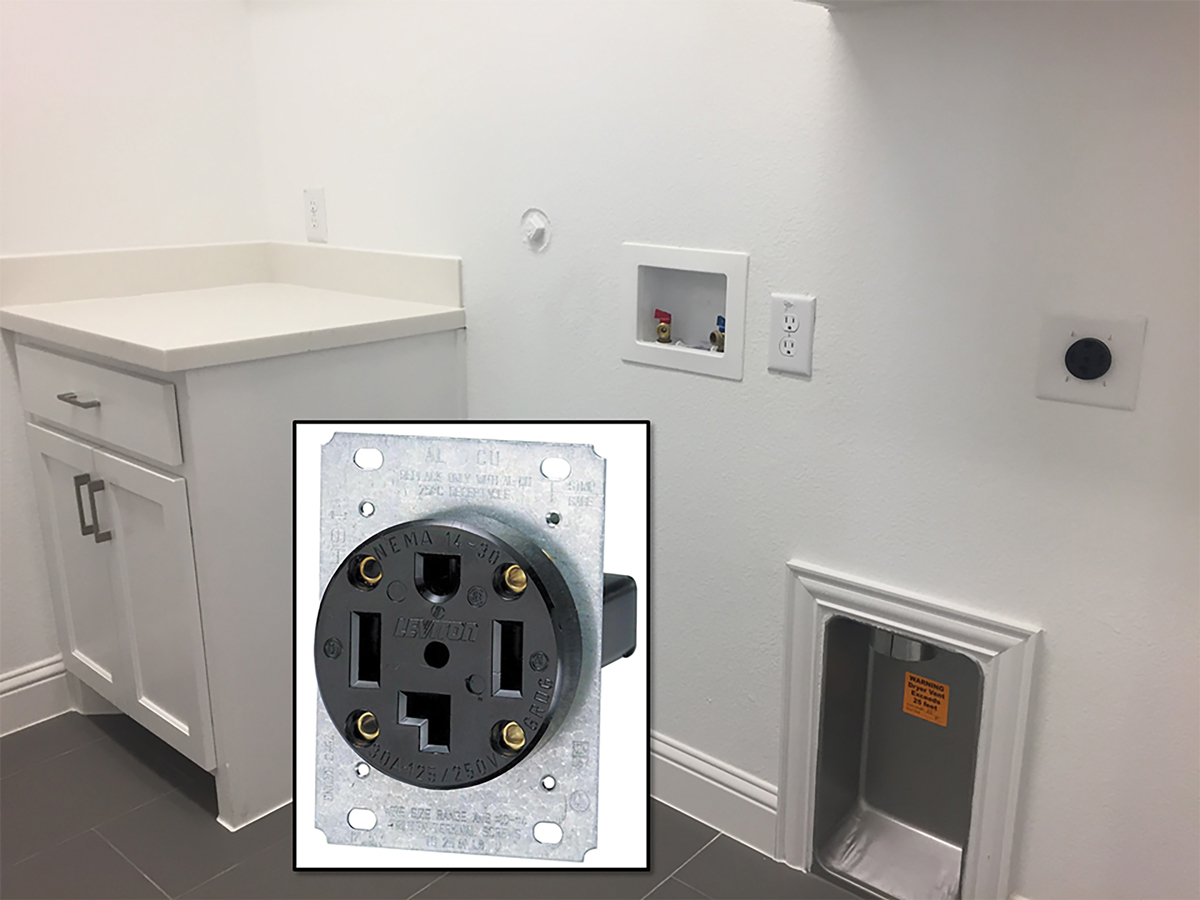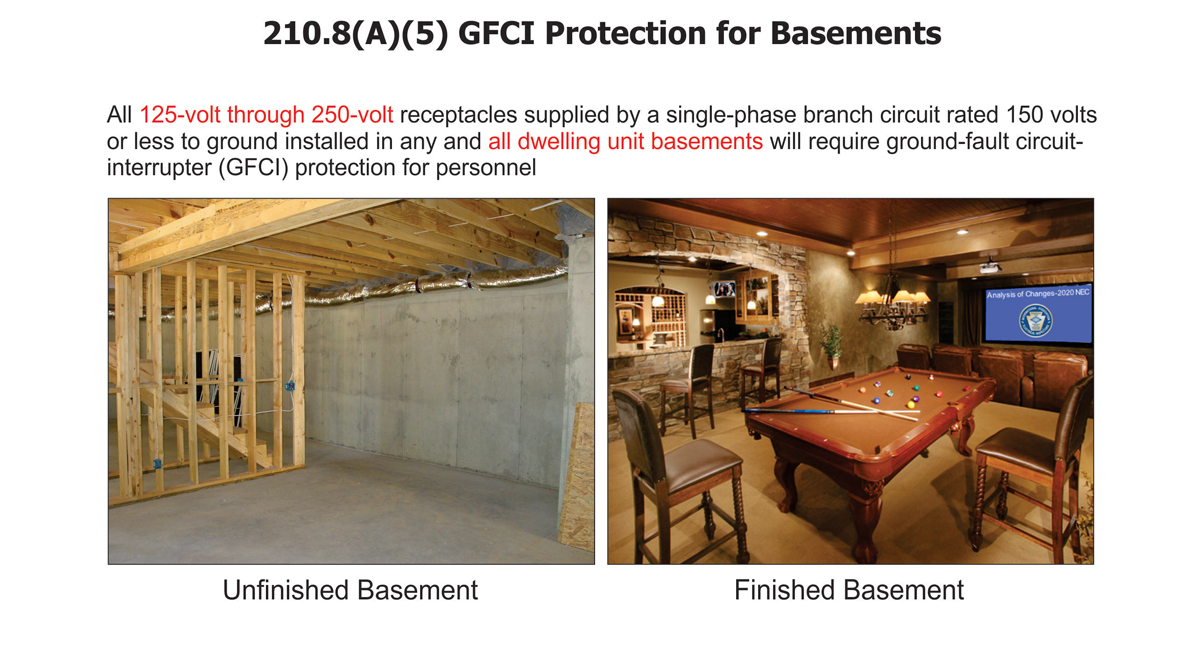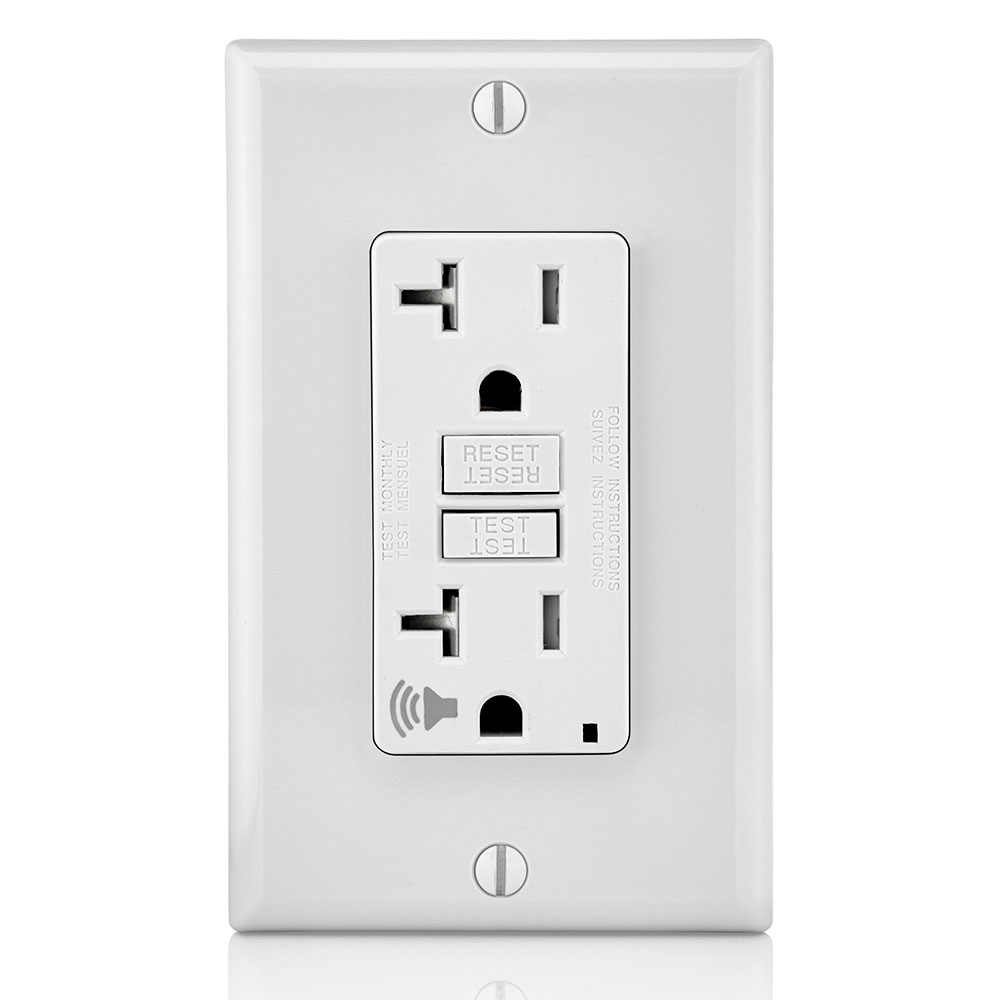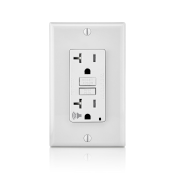210.8(A); (A)(5); (A)(11) GFCI Protection for Dwelling Unit
- Receptacles Rated 125 – 250V
- All Basement Areas
- Indoor Damp or Wet Locations
Change Summary
- Dwelling unit GFCI protection has been expanded to all 125-volt through 250-volt receptacles supplied by single-phase branch circuits rated 150 volts or less to ground installed in the specified areas of 210.8(A).
- GFCI protection now required for ALL dwelling unit basements (not just unfinished portions of basements).
- GFCI protection is now required at indoor damp and wet locations of dwelling units.
| NEC® Text |
|---|
|
210.8 Ground-Fault Circuit-Interrupter Protection for Personnel. Material taken from the National Electric Code. is reprinted with permission from NFPA 70., 2020 edition. National Electrical Code®, Copyright 2019, National Fire Protection Association, Quincy, MA. All rights reserved. |
Expert Analysis
Historically, GFCI protection at dwelling units has been limited to 125-volt, single-phase, 15- and 20-ampere receptacles. For the 2020 NEC, GFCI protection for personnel in dwelling units will be expanded to include all 125-volt through 250-volt receptacles supplied by single-phase branch circuits rated 150 volts or less to ground in the specific locations specified at 210.8(A)(1) through (A)(11) (bathrooms, kitchens, outdoors, etc.).

The addition of up to 250-volt receptacles and removing the amperage limitations of 15- and 20-amperes will provide GFCI protection to most receptacles commonly used in the specified areas of 210.8(A).
What this means is the 240-volt, 30-ampere dryer receptacle in the utility room will now require GFCI protection, Same with the 240-volt, 50-ampere oven or range receptacle. Any receptacle rated up to 250-volts supplied by single-phase branch circuits rated 150 volts or less to ground and installed in a dwelling unit kitchen, bathroom, laundry area, garage, or any other dwelling unit location addressed at 210.8(A)(1) through (A)(11) will now require GFCI protection for personnel.
Leviton Comment
The above requirement for GFCI protection of receptacles up to 250-volts may tempt installers to hardwire certain appliances to avoid this requirement. Keep in mind that if an appliance comes from the factory with an attachment plug, it is likely that the UL listing will be voided if the plug is removed and appliance is hard-wired. This can be problematic for inspectors. At the time of the printing of this book, Leviton does not manufacture a 240/250-volt GFCI receptacle (we don’t believe any other manufacturer does either). So a Circuit breaker based solution is the only option.
For the 2020 NEC, changes to the Code effected the GFCI requirements for receptacles in both an unfinished basement and a finished basement intended as a habitable space. While this GFCI requirement was historically reserved for “unfinished” basements, changes to the 2020 NEC threw this GFCI provision open to ALL dwelling unit basements (not just unfinished basements), including basements that are finished out to be a habitable room or space such as a bedroom, exercise room, or game room.

For the 2020 NEC, a new list item (11) was added that will require GFCI protection for all 125-volt through 250- volt receptacles supplied by a single-phase branch circuit rated 150 volts or less to ground installed in indoor damp or wet locations regardless of the room or areas of the dwelling unit it might be located in. The areas that come to mind are mud rooms with no sink or a mud room with a sink but receptacles in that area are located greater than 1.8 m (6 ft) from said sink. Another area that this new provision will cover would be an indoor area 210.8(A)(5) GFCI Protection for Basements 17 where animals like dogs are washed down before being permitted to re-enter the main dwelling unit.

Of course, this is open to interpretation. What is an indoor damp or wet location? Hopefully, the definitions for a damp, wet, or dry location found in Article 100 will be considered in making the determination as to an area’s location being considered damp, wet, or dry. Who determines if a location (indoors or outdoors) is considered a damp, wet, or dry location? That would be up to the authority having jurisdiction (AHJ).
Leviton Solution
Appliances installed in unattended areas like basements and crawlspaces can benefit from Leviton’s Audible Alert GFCI Receptacle. A power interruption due to a ground fault provides important protection to people but can shut down freezers, sump pumps and other necessary equipment if left undetected. Often GFCIs in an out-of-the-way place such as a back corner or storage area make daily visual checks for GFCI tripping unlikely. The new SmartlockPro® Slim GFCI with Audible Alert is the smart solution.

GFTA2-W
When a condition exists causing the SmartlockPro® Slim GFCI with Audible Alert to trip, users will be alerted by the sounding of an audible alarm. This audible alert indicates that power has been disconnected from loads plugged into or fed from the GFCI so users can immediately assess the reason and reset the device.








